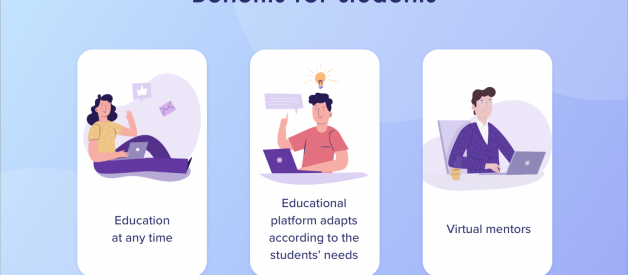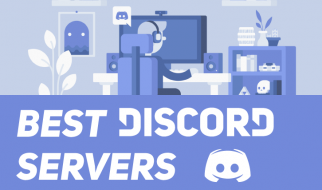All You Need to Know About AI in Education
Artificial Intelligence technology brings a lot of benefits to various fields, including education. Many researchers claim that Artificial Intelligence and Machine Learning can increase the level of education.
The latest innovations allow developers to teach a computer to do complicated tasks. It leads to the opportunity to improve the learning processes. However, it?s impossible to replace the tutor or professor. AI provides many benefits for students and teachers.
In this guide, we?ll discuss the advantages and disadvantages of Artificial Intelligence in education, existing solutions on the market, and how to create your AI-enabled platform.
Benefits of AI for Education
Educational apps can be utilized by two types of users ? students and teachers. Of course, such solutions bring different benefits to them.
Advantages of AI in Education for Students
- Education at any time. Young people spend a lot of time on the go. They prefer doing everyday tasks using their smartphones or tablets. AI-based applications provide an opportunity to study in free time, spending ten or fifteen minutes. Additionally, the students can get feedback from tutors in a real-time mode.
- Various options due to the students? needs. AI-based solutions can adapt due to the students? level of knowledge, interesting topics, and so on. The system tends to help students with their weak sides. It offers learning materials based on their weaknesses. For example, the student does the test before starting to use the app; the app analyzes it and provides suitable tasks and courses.
- Virtual mentors. AI-based platforms offer virtual mentors to track the students? progress. Of course, only human teachers can understand the scholars? needs better, but it?s good to get instant feedback from the virtual tutor.
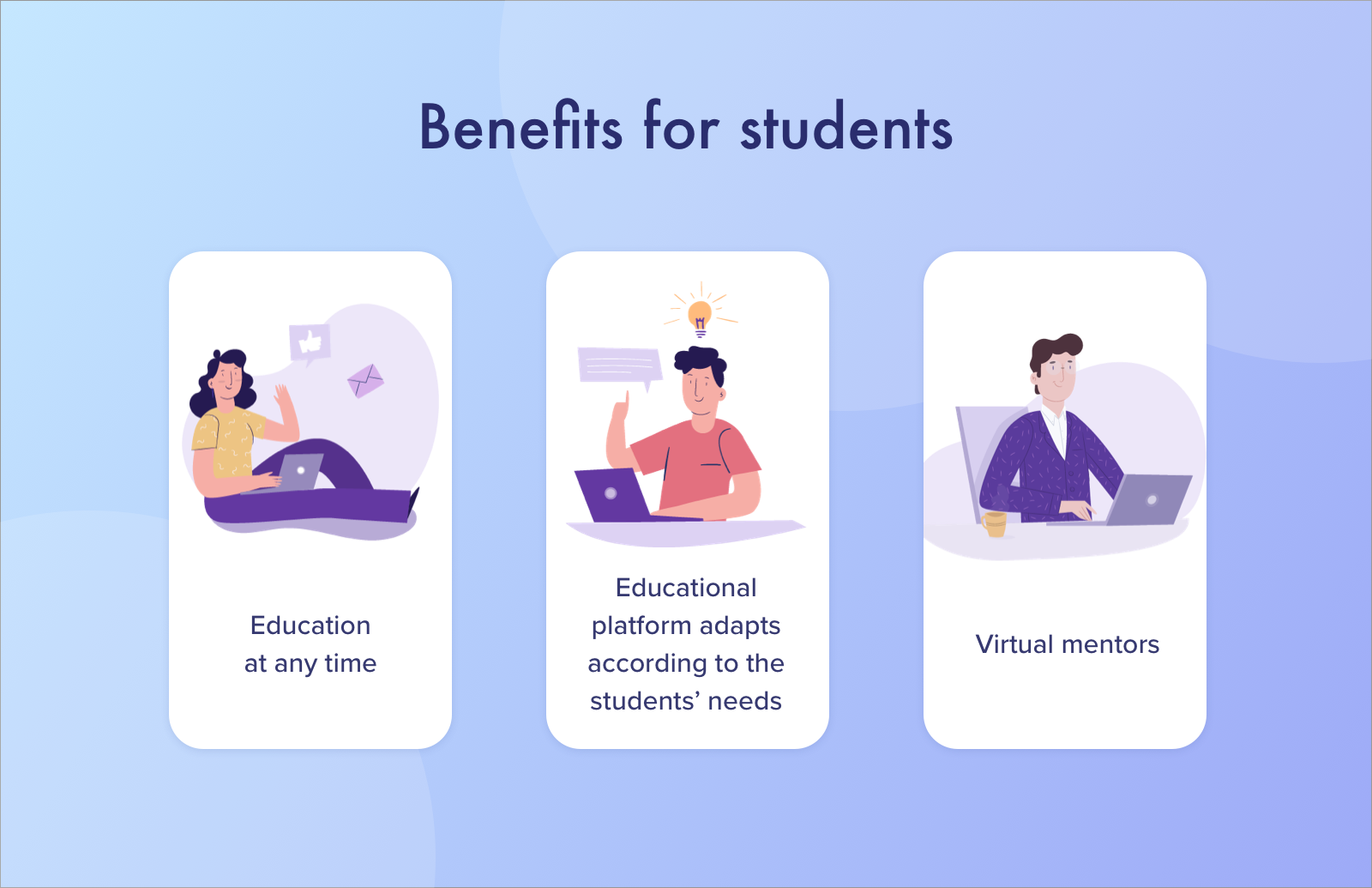
Advantages of AI in Education for Teachers and Schools
- Opportunity to see weaknesses. Different training courses allow seeing the gaps in students? knowledge. For example, the Coursera platform can notify the teacher if many students chose incorrect answers to a particular question. As a result, the tutor has an opportunity to pay attention to the demanded topic.
- Better engagement. Modern technologies like VR and gamification help involve students in the education process, making it more interactive.Personalization. Various AI-enabled algorithms can analyze the users? knowledge and interests and provide more personalized recommendations and training programs.
- Curriculum automatic creating. Teachers get a great benefit from AI development. These days, they don?t need to create a curriculum from scratch. As a result, tutors spend less time searching for necessary educational materials.
- Opportunity to find a good teacher. Educational platforms have a lot of teachers, so the student has an opportunity to communicate with specialists from other countries. The AI-enabled educational platform offers appropriate tutors, depending on the teaching experience and soft skills.
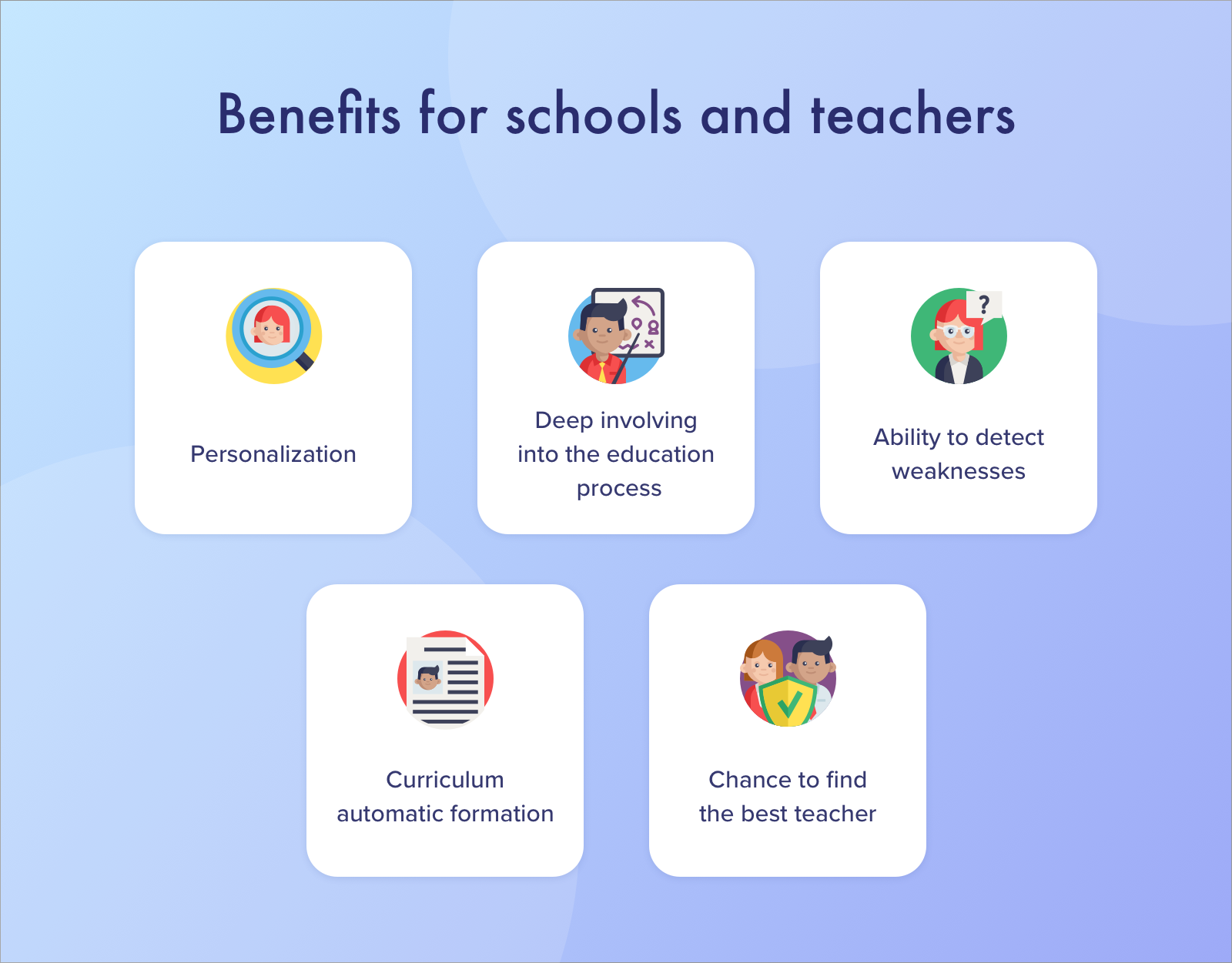
How to Use Artificial Intelligence in Education
One of the forms of Artificial Intelligence is Machine Learning. ML tends to analyze information, get conclusions, and make decisions or suggestions. It means that the ML-based platform can be taught with a lot of data. After that, it can fulfill various tasks.
There are several use cases of Artificial Intelligence for the education field. Let?s discuss them more precisely.
Individualized Learning
Artificial Intelligence allows focusing on the individual needs of the student. Many large education platforms like Carnegie Learning invest in AI to provide more personalized courses. These days, it?s possible to create individual instructions, testing, and feedback. As a result, learners work with the material they are ready for and fill the gaps in their knowledge.
As Artificial Intelligence becomes smarter, it might be possible to scan and analyze students? facial expressions. If the material is too complicated, the platform can change the lesson depending on their needs.
Voice Assistants
Such voice assistants as Amazon Alexa, Apple Siri, Google Home allow interacting with various learning materials without communication with a teacher. As a result, it?s possible to use an education platform anywhere and anytime.
For example, Arizona State University uses Alexa for routine campus needs. The assistant can answer common questions or follow the student?s schedule. Additionally, using such assistants, it quite interesting and exciting for learners, so they are mare engaged in the education process.
Smart Content
Smart content stands for various learning materials, from digitized textbooks to customized interfaces.
Let?s consider two examples.
- Content Technologies, Inc. is a development company that works with Artificial Intelligence. Its primary goals are to automate business processes and improve users? experience. The company has already created solutions for the education field. For example, Cram101 can break the textbook?s content into parts. They can include a chapter summary, tests, and so on.
- Netex Learning is one more company that focuses on creating smart content platforms. The solution is full of AI-based features ? for example, real-time feedback and digital curriculum. Netex platform also offers personalized cloud platforms with virtual training, conferences, and more.
Global Learning
AI brings a lot of opportunities to share knowledge all over the world. Using Artificial Intelligence solutions, students can study various courses and training programs. There are a lot of platforms with interactive learning materials from the best tutors.
AI also provides opportunities for students who speak different languages or have visual or hearing problems. For example, Presentation Translator is an AI-based solution that creates subtitles in real-time mode. Using AI Speech Recognition, students can hear or read in their native language.
Existing AI-Based Solutions in Education
There are a lot of tech-driven solutions in the education industry. Among AI examples are DreamBox, Khan Academy, Achieve3000, and many others.
These platforms can analyze the level of knowledge, offer backward communication, provide a plan for improvements, and so on.
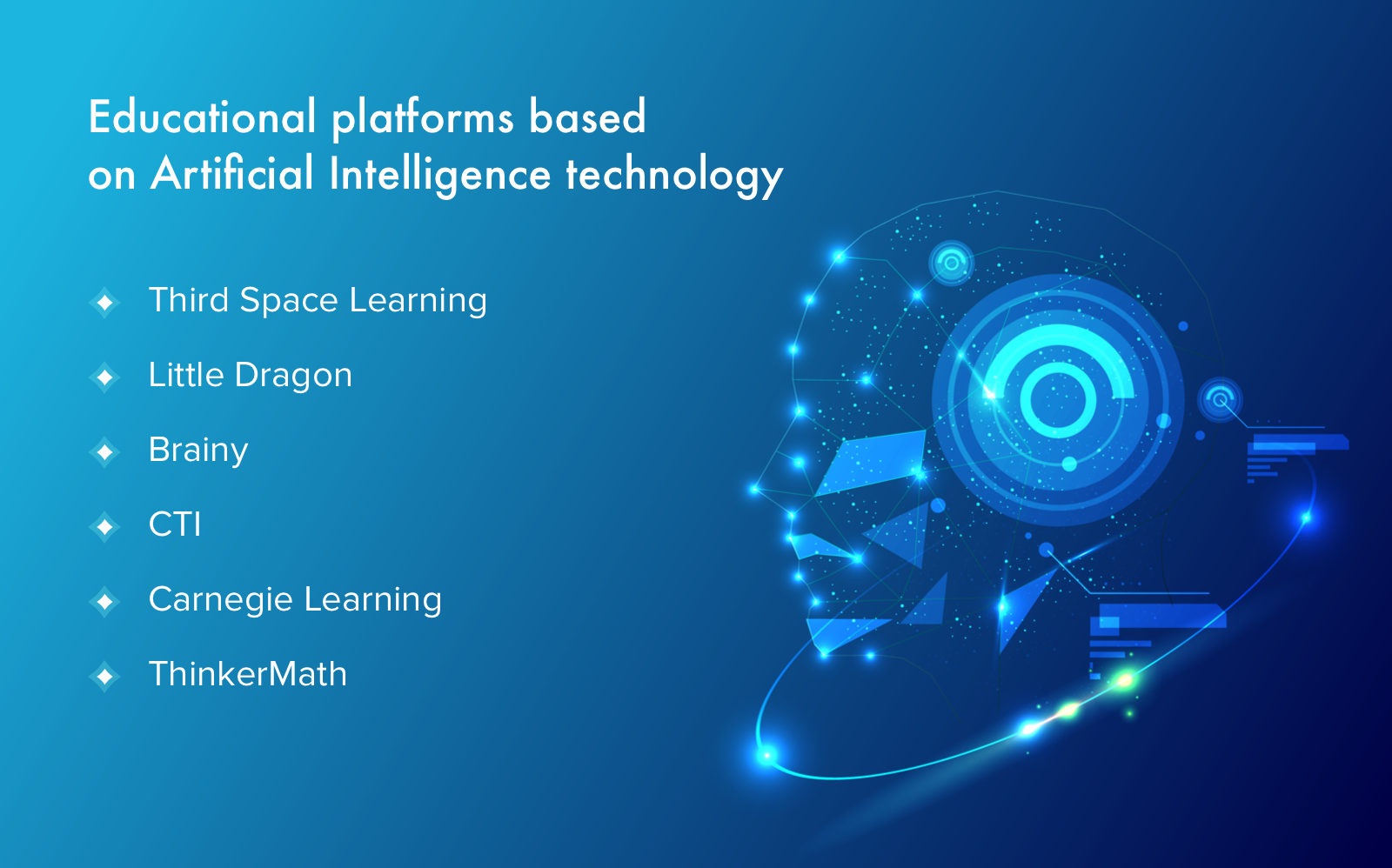
- Third Space Learning. This system was created with the help of scholars from London University College and actively use Artificial Intelligence opportunities. The system can recommend ways to improve teaching techniques. For example, if the teacher speaks too fast or slow, the systems send a notification.
- Little Dragon. It?s a startup company that creates smart apps using Artificial Intelligence. Such applications can analyze the users? emotions and adapt the user interface depending on it. The company also makes educational games for kids.
- CTI. This company also uses AI to develop tech-driven solutions for education. The primary goal is creating smart content. For example, Cram101 can analyze the textbook or other learning materials and choose the critical information to create texts.
- Brainly. It is a social network for students? cooperation. For instance, learners can discuss issues connected to their homework or get new knowledge from other students. The company utilizes Machine Learning to provide a better user experience. ML assists in selecting spam and inappropriate content. Additionally, AI is used to offer more personalized materials.
- Carnegie Learning. This system tends to provide more customized education materials, making the learning process more comfortable. This solution offers real-time education for school students. Carnegie Learning analyses the users? keystroke and allows the tutor to see the students? progress.
- ThinkerMath. This AI-enabled solution helps small kids learn Math. There are various games and rewards to achieve better engagement results. The app also offers a personalized learning plan depending on the child?s knowledge.
There are a lot of AI-based solutions that improve the education field. This industry is quite promising due to incredible opportunities for development.
How to Develop AI-Enabled Platform for Education
Considering the information we?ve discussed, you may wonder how to build an e-learning website and integrate Artificial Intelligence. There are six main steps that you need to follow.
- Step 1. Study the competitors? solution.
- Step 2. Consider interactive and interesting content.
- Step 3. Set your project requirements and discuss them with the developers.
- Step 4. Test your app properly to avoid bugs.
- Step 5. Release the app and get users? feedback.
- Step 6. Update your solution regularly.
Step #1. Study the Competitors
Before creating your solution, you need to analyze the competitors carefully. These days, users are quite spoilt, so you need to offer them some new features.
Additionally, knowing the existing platforms, you can generate more interesting concepts for your project. You can study the tech stack or design ideas.
Step #2. Consider Interactive and Useful Content
Creating a solution for education, you need to offer users? useful content.
For example, you can choose several fields or topics like Math, Literature, and others. After that, you can cooperate with tutors from universities or colleges.
Additionally, you can gather learning materials from various sources like training programs, courses, and more.
Step #3. Set Your Project Requirements
Before starting the development, you need to clarify your project requirements and business goals.
You should consider the number of required features. For example, you can create an MVP version of your platform with some basic features. It allows you to get some feedback from users.
After that, you can update the system regularly, adding advanced features. By the way, it?s good to study what kind of features the users want to have.
To start the development, you need to cooperate with experienced software developers. They need to have experience in Artificial Intelligence.
There are two possible variants to work with software builders ? create an in-house team or cooperate with an outsourcing company. Each option has pros and cons. For example, vendors tend to offer more affordable hourly rates. However, it?s easier to communicate with an in-house team of developers.
Step #4. Test the Platform Properly to Avoid Bugs
To gain more loyal users, you need to provide an excellent user experience. Of course, users don?t want to interact with a platform full of bugs.
To find and fix bugs before launching the project, you need to cooperate with qualified Quality Assurance engineers.
Step #5. Release Your Solution and Get Users? Feedback
We?ve already mentioned that it?s better to create an MVP version of your solution to get feedback.
Users? opinions can help you understand what parts of the system you need to improve. Additionally, students and teachers can tell about their expectations and requirements for your application.
Step #6. Update the System Regularly
It?s vital to improve your platform regularly, offering users new opportunities and exciting features.
To be competitive in the market, you should stay up-to-date. It?s better to cooperate with various tutors and offer new training programs.
As you can see, the education field offers a lot of opportunities to integrate and use Artificial Intelligence. The market already has several great solutions for adults, children, tutors, and even schools. AI-based applications can analyze an enormous amount of information, offering users more personalized learning materials.
Author?s bio
Vitaly Kuprenko is a technical writer at Cleveroad. It?s a web and app development company in Ukraine. He enjoys telling about tech innovations and digital ways to boost businesses.
